They are called EVSE, for Electric Vehicle Supply Equipment.
First, it's a GFCI (human safety rated RCD).
However, it's a "smart GFCI" that can self-reset at intervals - most ground faults are transient events. This means, you will come out in the morning to a charged car instead of a tripped GFCI.
You could replicate that part of its function with a real GFCI (or 6 mA sensitivity RCD)... but then, you'd awaken to a tripped GFCI and a flat car.
Second, it tells the car how much current it can draw.
This is the most important function.
When an EVSE is permanently installed, it is wired from a circuit breaker through in-wall wires to the EVSE. The wires have a current limit and the breaker protects them. The current limit might be as low as 12A** to as high as 80A**. As part of commissioning the EVSE, it's jumpered to set the ampacity of the circuit.
The EVSE sends a signal on that cable to tell the car how much it may draw. The actual battery charger is on the car, and obeys. That signal can be changed dynamically on the fly, and yes, you can do amazing stuff with that! By design and agreement with safety standards organizations. Having to upgrade your house's electric service is a sales-killer, and SAE/Tesla didn't design the standard to sell service upgrades. They designed it to sell cars.
The signal is a 1000 Hz PWM signal on the Control Pilot (CP) pin. The duty cycle in percent indicates the authorized amps, according to a table. (generally 0.6A per percent, but it gets weird above 48A).
There is no need to communicate voltage since the on-vehicle charger is a switching power supply that can accept multiple voltages.
Third, it provides a contactor to energize the terminals.
Inside the EVSE is a big clicky-clack relay. When relays are that large, they are called contactors. This physically energizes the large power and neutral pins on the J1772 or IEC 62196 connector. (the signal protocols are the same).
This contactor energizes when all the handshake protocols are agreed.
Fourth, the handshake protocols.
The EVSE monitors the CP pin to detect the presence of a car. The EV presents a 2740 ohm resistance to say it is present, but not ready to charge. When ready to charge, the vehicle changes that to 882 ohms, or 246 ohms if the car has a battery type that requires a well-ventilated space (e.g. lead-acid with hydrogen off-gassing). The EVSE will generally close the contactor at this point, energizing the power pins.
Reversely, on the PP (Proximity Pilot) pin, the EVSE (or rather, its plug) presents a 150 ohm resistance to indicate the car is plugged in. So don't drive away; do think about requesting charging. Pushing the release button on the plug changes this to 480 ohms: The car will immediately stop drawing current. The user is unplugging the car and we don't want it to arc.
Note that the PP pin doesn't even need to come down the EVSE cable. It is all handled in the connector itself. But it could; PP could carry a high-frequency communication protocol for charge balance management, or billing and payments at commercial kiosks. For that matter, there's room for that on CP. But that is not part of the J1772 or IEC 62196 standard; that's for someone else to design.
Implementation notes.
First yes, a 12-year-old could build one of these with an Arduino, if one ignored the GFCI. Which is a bad idea.
Note that the "smart GFCI" doesn't need its own contactor to interrupt, it can use the existing contactor.
With hardwired or mounted EVSE's, the current is set during Commissioning. However, with portable EVSE's such as yours, it gets a little more interesting. Either the EVSE must make a safe assumption (such as 10A in Europe; maybe 12A in North America).
The Ford Mobile Charger has exchangeable plugs either NEMA 5-15 (120V/15A, found everywhere) or NEMA 14-50 (240V/50A, found at RV/caravan parks). The exchangeable plugs provide a signal back to the EVSE to tell which kind of plug they are, so the EVSE can set amps to 12A or 40A, respectively (80% of circuit).
* North America and other El NEC countries require the circuit be rated for 125% of the EVSE load. So you get 12A charging on the very common 15A circuit size, at either 120V or 240V, depending on how the breaker is phased. This at 12A gives 1440 or 2880 watts of practical charging.
** Again in El NEC lands, an 80A charger just fits on a 100A circuit per the 125% rule. Since a 100A circuit is always 240V, that is 19,200 watts of practical charging. North America runs such high amps because it doesn't have 3-phase for residential.

